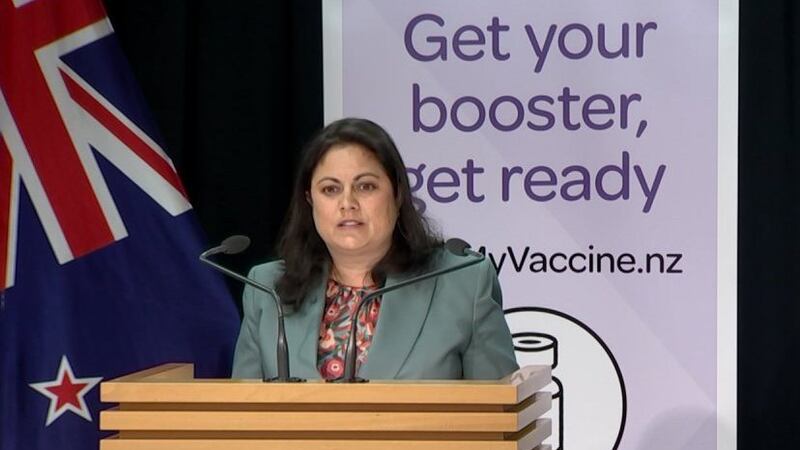With the first stage in managing the Omicron outbreak already announced, Dr Ayesha Verrall and health director-general Dr Ashley Bloomfield detailed the next stages today from Parliament.
Omicron cases are required to isolate at home for 14 days and close contacts to isolate for 10 days in the first phase.
Phase two
In the second phase, when there are 1000 daily cases, "our public health effort is aimed to slow the spread of the virus," Verrall says. "This means reducing the number of cases to a level our health system can cope with. Importantly, because of vaccination and system improvements, we are in a much better position than we were two years ago."
The isolation period will drop down to 10 days for cases and seven days for contacts.
Dr Verrall also says the system will focus more on identifying those who are at greater risk of severe illness from Omicron, "which will be a small percentage of cases."
The second phase will also focus more on identifying those who are in critical workforces needed to keep supply chains running.
"At this stage, most people who are more able to will start being managed through our digital tools. Support from health and welfare services will be provided as required."
Text messages will be sent out for positive cases, "with phone support available for those who need it." Contacts will also be notified by text message. A link inside the text message will send people to an online portal called the Covid-19 Health Hub that will provide health advice, "and resources on everything a person needs to know in clear, translatable and accessible formats."
The ministry says it and GPs are working to identify those without internet access or capability so that, if they test positive, they will be automatically flagged to receive a phone call or outreach service.
PCR testing will still be used in phase two but will enable a test to return to work approach for asymptomatic critical workers who are close contacts of cases using rapid antigen tests (RAT).
Strict protocols will be implemented for those returning to work in a critical workforce. They include daily symptom checks, daily RATs before they start work, strict use of medical masks put on before entering the workplace, masks changed as needed throughout the day and complying with any infection, prevention and control protocols at work.
"When the mask is removed, for example, when eating and drinking, physical distancing must be maintained. Eat alone or in a well-ventilated space where possible. Travel alone to, from, or around work and between jobs. Ensure good ventilation in small spaces, and masks must be worn by everyone present."
If any symptoms develop for those workers, they must follow public health advice for close contacts.
RATs are pre-emptively being supplied to healthcare sectors, critical workforce organisations and providers who work with vulnerable populations, including Māori and Pasifika providers.
Phase three
This phase kicks in when case numbers are in the tens of thousands, though Dr Verrall says, "we don't expect to be at this situation in a few weeks."
The majority of positive cases will be provided support to self-manage the virus at home.
The definition of contacts will change to household and household-like contacts, meaning the highest-risk contacts will need to isolate.
Supported self-service, rapid antigen testing for diagnosing Covid-19 and a self-service tool to enable identification of high-risk contacts will be significant to respond to the high volumes of Omicron cases.
Other technology solutions are under development to enable the flow of RATs and to view vaccination and testing results.
The majority of people will be supported and be able to self-manage and isolate at home, and clinical care will focus on anyone with high needs. Clinical care and welfare support will be targeted based on need.
RATs can also be used by symptomatic people or priority populations, though PCR testing's focus will be used more on priority populations. RATs will be available at GP clinics, pharmacies, testing centres or workplaces for symptomatic or critical workers.

